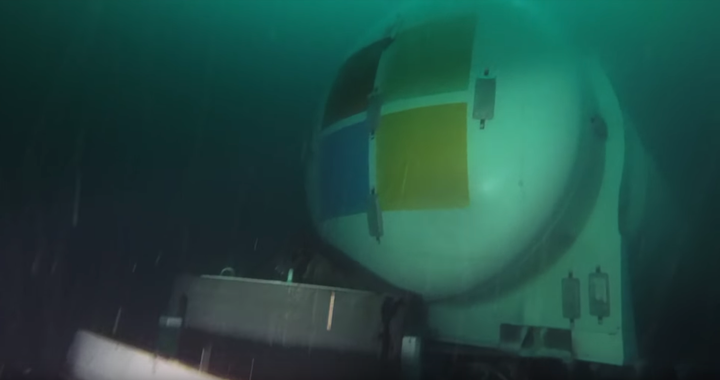Just off the coast of Orkney in Scotland, Microsoft has dropped a huge data centre at the bottom of the ocean.
If surrounding hundreds of computers with a large body of water sounds like a terrible idea then wait, there is method to Microsoft’s madness.
Data centres are vital to our world, without them there would be no web streaming, no cloud and no backups when we drop our smartphones down the toilet. In order to provide all these services, these vast warehouses of computers use staggering amounts of energy to both power them and keep them cool.

Microsoft believes it has a solution to this environmental problem which is Project Natick. It’s a data centre that’s powered completely by local renewable energy (solar and wind) and then cooled by nothing more than the ocean around it.
Computers often get warm, data centres on the other hand get scorching hot, and to keep them from overheating companies have to either install vast cooling fans or use supercooled liquid to keep them from melting.
Rather than bringing the cooling to the computer, Project Natick literally places the computers into a naturally cold environment - the North Sea.
Not only do you then get free cooling but you can also place the data centres closer to towns and cities giving the public faster access to the web, video games and even AI-based technologies.
Eventually Project Natick envisages placing these data centres all over coastal regions, connecting them to local renewable energy sources which in turn reduces their running costs to virtually nothing.
These aren’t small capsules either, this trial data centre contains some 864 standard datacenter servers with enough storage for around 5 million movies.
This initial trial capsule has been designed to be self-sustaining for up to five years, however Microsoft believes that if it were rolled out globally each one could have a lifespan of almost a decade. Once it has served its purpose the capsule would be retrieved, the data centre would be recycled and upgraded and then it could be placed back into the ocean for another 10 years.
Microsoft certainly aren’t the first major tech company to find innovative ways to cool its computers. The world’s largest data centre is currently being built in Norway where it will be powered by renewable energy and cooled by the freezing cold temperatures found north of the Arctic Circle.
Other companies such as Facebook have also built their data centres in Norway to take advantage of the country’s naturally colder climate.
